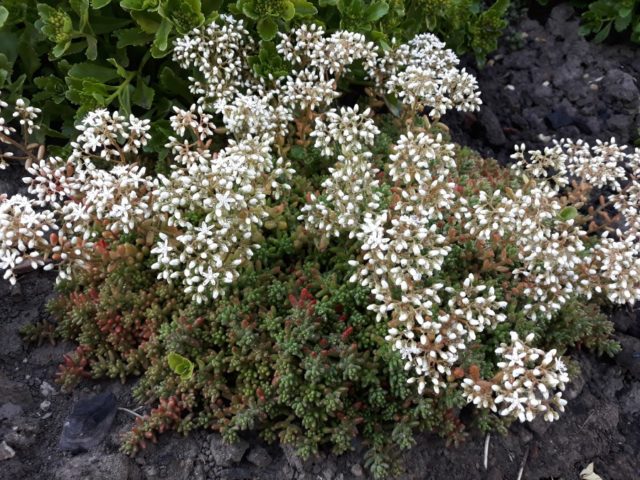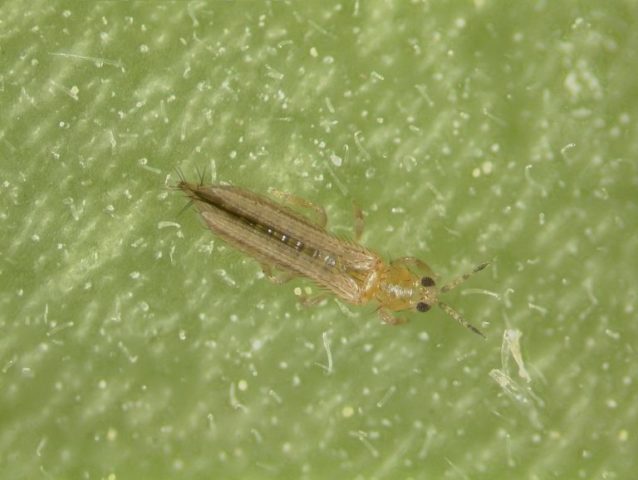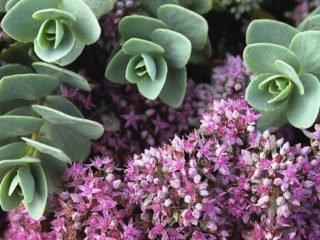Content
- 1 Description of ground cover sedum
- 2 Types and varieties of ground cover sedums
- 3 Creeping sedum in landscape design
- 4 Features of reproduction
- 5 Planting and caring for ground cover sedum
- 6 Diseases and pests
- 7 Possible problems
- 8 Interesting Facts
- 9 Conclusion
Sedum ground cover is a very hardy, easy to grow and beautiful ornamental plant. To appreciate its benefits, you need to study the description of the crop and popular varieties.
Description of ground cover sedum
Groundcover sedum, or sedum, is a succulent plant from the Crassulaceae family. It is a low perennial, less often a biennial. The leaves of sedum are fleshy and whole, attached directly to the stem in an alternate or mosaic pattern, often forming rosettes.Their shade depends on the lighting; in the sun, sedum takes on a reddish color, while in the shade it remains green. The height of the plant can reach 25-30 cm.

Ground cover sedum looks impressive in the garden even outside the flowering period
Sedum blooms from July to September. The perennial bears star-shaped flowers collected in thyroid, racemose or umbellate inflorescences. Depending on the variety, it can produce pink, white or yellow buds, blooms profusely and looks very decorative.

In mid-summer, sedum is decorated with tall, bright inflorescences
The groundcover perennial sedum grows all over the world - in Eurasia and Africa, South and North America. It mainly chooses meadows and dry slopes; it does not like high humidity, but it tolerates dry soils very well.
Types and varieties of ground cover sedums
In total, there are several hundred types of ground cover sedum with photos and names. But only a few of them are popular, the most beautiful and unpretentious to growing conditions.
Sedum large (Maximum)
Large sedum is also called medicinal or ordinary. The perennial is widespread in Europe, with thick green leaves tightly attached to fleshy short stems.
Matrona
A tall ground cover variety reaches 60 cm, its distinctive feature is bluish-green leaf plates with a reddish bloom. During flowering it produces light pink buds.

Matrona is one of the tallest varieties of ground cover sedum growing up to 60 cm
Linda Windsor
The variety grows up to 35 cm, has rounded dark purple leaves. From July to September it bears red inflorescences and attracts a lot of attention in the garden.

Ground cover sedum Linda Windsor is made taller during the decorative period due to inflorescences
Sedum white (Album)
A low species, up to 20 cm tall, the leaves of the perennial are rounded and elongated, turning red in autumn. The buds appear in June and July, usually white or light pink in color, collected in corymbose inflorescences.
Atropurpureum
Distinctive features of the variety are brown leaves. In July, Atropurpurea blooms profusely and brightly with white buds, while the leaves temporarily turn green.

Sedum Atropurpurea rises up to 10 cm
Coral Carpet
A dwarf variety no more than 10 cm tall. The photo of creeping sedum shows that the leaves of Coral Carpet are bright green with a coral tint in the warm season, and by autumn they turn red. In June and July, the variety bears small white-pink flowers.

Coral Carpet emits a pleasant smell during flowering
Sedum acrid (Acre)
A very hardy and unpretentious variety of ground cover sedum. It rises 5-10 cm in height and has diamond-shaped dark green leaves. It usually blooms with golden yellow buds in mid-summer.
Aurea (Aureum)
The variety grows to a maximum of 20 cm and spreads 35 cm wide. The leaves are golden-green, bright, and in July are almost completely hidden under abundant flowering; the perennial bears star-shaped yellow buds.

Sedum Aurea has good cold resistance and overwinters at temperatures down to - 35 ° C
Yellow Queen
The peculiarity of the variety is its small lemon-salad leaves, forming a thick cushion over the soil. From June to July it produces bright yellow small buds in semi-umbrella inflorescences and thrives in sunny areas.

Sedum Yellow Queen rises up to 10 cm above the ground
Sedum false (Spurium)
An unpretentious creeping variety up to 20 cm tall with concave heart-shaped or wedge-shaped leaves. Characterized by late flowering, from July to August.
Green Mantle
A perennial plant up to 10 cm tall, it is distinguished by very juicy emerald green leaves of a round shape. From July to August it is abundantly covered with bright yellow flowers.

The Green Mantle variety looks equally decorative during flowering and outside of it.
Roseum
False ground cover sedum grows naturally in the meadows and mountain slopes of the Caucasus. It extends in height by an average of 20 cm, the leaves are fleshy, dark green, with blunt teeth along the edges. During the decorative period, it is abundantly covered with pink corymbose inflorescences.

The Roseum variety blooms from June to August
Spatulate sedum (Spathulifolium)
A ground cover sedum with a height of about 15 cm and fleshy spatulate leaves with rosettes at the ends. Blooms in mid-summer, producing mostly yellow buds. It does not shed its leaves for the winter, but needs shelter.
Cape Blanco
A low-growing variety with bluish leaves covered with a white coating and turning red in the sun. In June and July it is covered with bright yellow inflorescences, rising 15 cm above the rosettes on long peduncles.

Cape Blanco sedum grows well in sun and shade.
Purpurea (Purpureum)
In the photo of the type of groundcover sedum, it is noticeable that it has bluish-purple leaves with a silvery coating. Purpurea does not exceed 7 cm in height, the peduncles extend another 10 cm above the rosettes. The decorative period occurs in July and August, the variety bears small yellow buds in star-shaped inflorescences.

Sedum Purpurea prefers to grow on dry, rocky soils
Creeping sedum in landscape design
Basically, ground cover sedum in landscape design is used for several purposes:
- for creating carpeting in low-growing flower beds;
Sedum can be combined with any perennials that have similar soil requirements
- as color spots;
Bright creeping sedums add variety to your lawn or rock garden.
- for decorating parapets, roofs and balconies.
Ground cover sedum is used in roof decoration
Low-growing ground cover sedum is a very colorful crop that can spread quickly and abundantly throughout the garden. With the help of a perennial you can revive any area; it is only important to ensure that the sedum does not begin to crowd out other plants.
Features of reproduction
Ground cover sedums can be propagated by both seed and vegetative methods. But cuttings are most often used; it allows you to get a new plant specimen the fastest.
Sedum cuttings have their own characteristics. They do it like this:
- Several healthy parts of the shoots are separated from the mother bush;
- lay them out on a tray and leave for 2-3 hours in the shade in a dry place;
- when the cuttings dry out a little, they are immediately planted in a pot or in open ground in the garden.

When cutting sedum, it is important to dry the material and immediately plant it in slightly moist soil
Planting and caring for ground cover sedum
Planting a hardy sedum groundcover in your garden is easy.To do this, just follow a few basic rules.
Recommended timing
In the middle zone and in the northern regions, it is customary to root sedum groundcover in the ground at the end of May, when the temperature remains stable at 15 °C day and night. In the southern regions, autumn planting is acceptable in mid-September; the seedling will have enough time to adapt before the cold weather.
Site selection and soil preparation
Ground cover sedum can grow in a sunny area and in light shade. It is not recommended to plant it in a poorly lit place, since in this case the plant will begin to stretch upward and lose its attractiveness.
The soil for sedum requires fertile but light soil. The selected area is dug up and sand, crushed stone and wood ash are added. You can also add a shovel of humus and potassium-phosphorus mineral fertilizers. Make a small hole, a few centimeters deep, and immediately water it with warm water.
Planting ground cover sedum
Planting sedum in the ground is a very simple task. A small bush, sprout, or even a fleshy dried leaf of a plant is lowered into the prepared hole and sprinkled with soil. There is no need to water the succulent; for the first time, moisture is added only a week after planting.

Leaves and shoots of sedum are planted in the ground without prior rooting.
Features of care
When growing sedum, you need to monitor mainly the level of humidity and ensure that the crop does not spread to neighboring plantings. The ground cover sedum is very unpretentious and rarely creates problems for gardeners.
Watering and fertilizing
It is necessary to water the succulent only during a long summer drought, and the soil should be slightly moistened. The rest of the time the plant receives moisture from precipitation.
You need to feed sedum twice a season. In the spring, in dry weather, you can water the succulent with diluted mullein or complex minerals; in the fall, at the end of September or early October, it is permissible to use liquid bird droppings.
Weeding and loosening
Since ground cover sedum can rot on compacted and moist soil, it is recommended to loosen it shallowly once a month to saturate it with oxygen. At the same time, you can remove weed sprouts from the ground, which take away beneficial substances and water from the sedum.
If caustic sedum grows on the site, then weeds will not develop in the immediate vicinity of it; the poisonous plant will displace them on its own.
Trimming
Ground cover sedum grows quite quickly and can extend beyond the designated area. Therefore, it is pruned as necessary; the procedure is carried out in spring or mid-autumn. During shearing, too long stems, dry and damaged leaves are removed, and in general no more than 1/3 of the green mass is eliminated.

To maintain its decorative shape, the sedum groundcover needs to be trimmed regularly.
The cut parts of the succulent are collected and destroyed. It is important to ensure that the sprouts do not fall onto the ground somewhere else in the garden, otherwise the sedum will easily take root in a random place, clinging to the soil.
Wintering
With the onset of autumn, in the middle or end of October, it is customary to cut off the sedum, leaving sprouts 3-4 cm above the ground level. In the southern regions, the succulent can be left open until spring; in the middle zone and in the north it is covered with a layer of soil, fallen leaves and dry leaves. branches.You can also cover the area with lutrasil for insulation and protection from snow.
Pruning in the southern regions is not a mandatory step. But it is recommended to do it, since last year’s shoots will still lose their attractiveness over the winter, and they will have to be removed in the spring.
Transfer
Groundcover sedum is recommended to be grown in one place for no longer than 5 years. After this, the transplant is carried out, the plant is carefully dug out of the ground and transferred to a new area, where it is re-rooted in the ground in the usual way. If the sedum has grown greatly, then first it is divided into several parts, the rhizome is cut or above-ground shoots are taken. In both cases, the succulent will take root very quickly.

5 years after planting, the ground cover sedum needs to be moved to a new location.
Diseases and pests
The ground cover plant has good immunity and rarely suffers from illnesses. However, gray rot is dangerous for sedum. The disease develops in overly wet soil, dark spots appear on the leaves of the succulent, and then it begins to quickly fade. When the first symptoms are detected, the affected shoots must be immediately removed and treated with Fundazol.

The most common sedum disease is gray rot, which occurs when overwatered.
Among the pests that are dangerous for sedum are:
- weevils;
The weevil feeds on sap from stems and leaves and can greatly eat away at sedum
- thrips;
Thrips feed on the juice of fleshy leaves and impair the development of ground cover sedum
- butterfly caterpillars.
Butterfly caterpillars can heavily eat succulent sedum leaves
Insect control is carried out using the drug Actellik. It is important to inspect the plantings more often in order to notice the appearance of pests in time.
Possible problems
There are practically no difficulties when growing sedums. Possible problems include only:
- swampy soil in an area with a succulent - in conditions of high humidity, sedum will not be able to develop and will quickly begin to rot;
- close proximity to other perennials; if you plant other crops next to the sedum, it will begin to crowd them out, and besides, few plants have similar growing requirements.
Interesting Facts
The Latin name of the crop "Sedum" takes its roots from the Latin word "sedare", meaning "pacification" - the fleshy leaves of sedum have analgesic properties. There is another version of the origin - from the word “sedere”, or “to sit”, since most types of succulent grow almost close to the ground.
In the literature and among the people, the plant is called not only sedum, but also hare grass, fever grass. Sedum leaves are actively used in home medicine to treat ailments.
In the old days, sedum was endowed with mystical properties. According to signs, you can weave a wreath from the shoots of the plant and hang it over the threshold to protect against evil. Succulent sedum, even when cut, does not wither for a long time, so it can serve as a talisman for a home for several months.

Sedum has anti-inflammatory and healing properties
Conclusion
Sedum groundcover is a hardy and low-maintenance succulent plant. When growing, it is important not to over-moisten the soil, but otherwise the sedum feels comfortable in almost any conditions.














